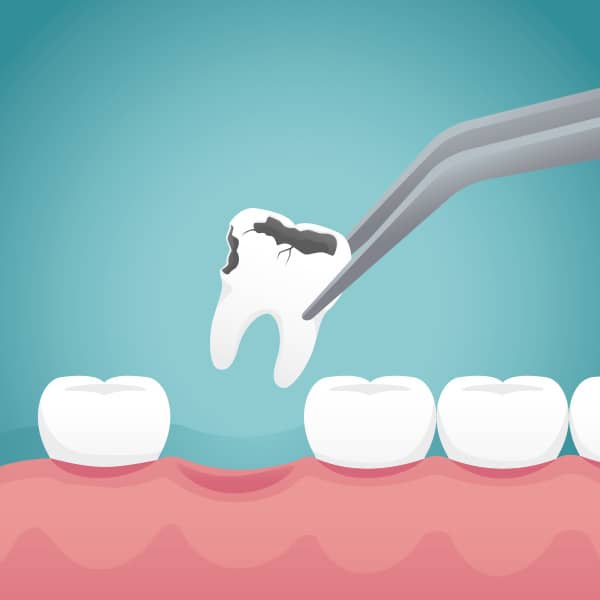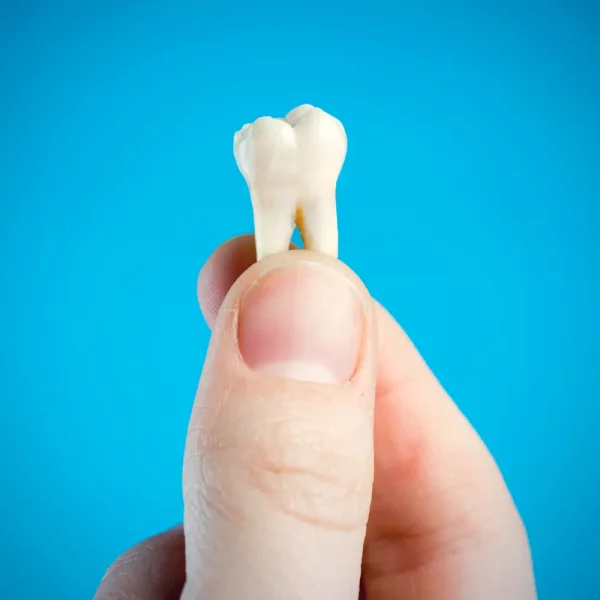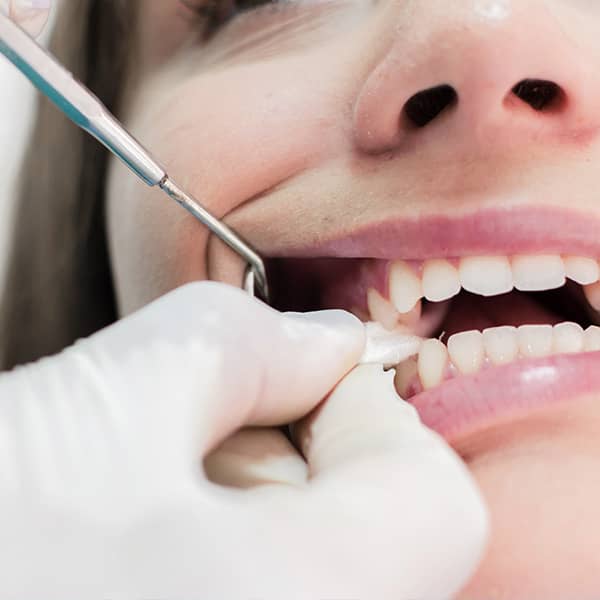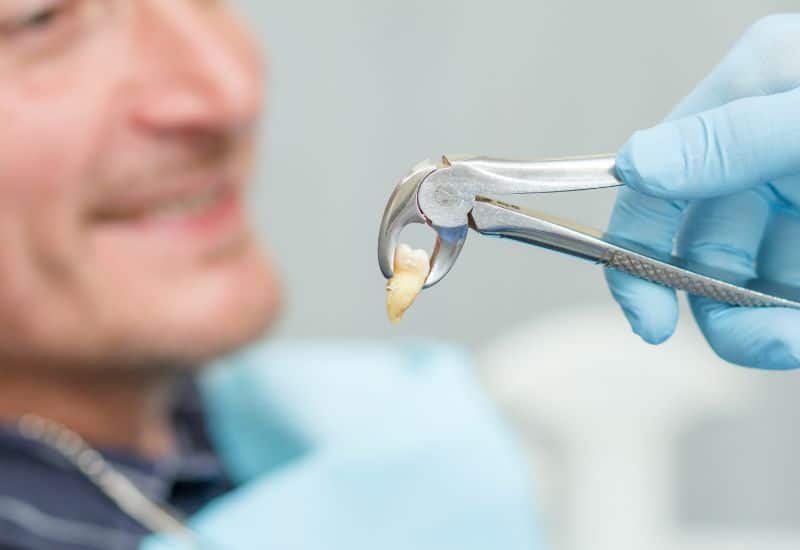Home / Dental Services / Tooth Extraction
Tooth Extraction in Miami, FL
Dr. Gallardo Periodontic & Implant Dentistry of Miami, Florida offers a wide range of dental services including tooth extractions. He understands that every patient has unique oral health concerns and he strives to provide personalized treatment plans that meet his patients’ individual needs.
Why Choose Tooth Extraction at Gallardo Periodontics
- Pain Relief and Infection Control: Remove infected or decayed teeth to eliminate pain and prevent the spread of infection.
- Prevent Future Dental Issues: Address overcrowded or impacted teeth to avoid misalignment and protect surrounding teeth.
- Prepare for Restorative Treatments: Create space for dental implants, dentures, or orthodontic procedures to enhance your smile and oral function.
- Experienced and Skilled Care: Benefit from Dr. Gallardo’s 30+ years of expertise in performing safe and effective tooth extractions.
- Comfortable and Efficient Procedure: Enjoy a smooth extraction experience with local anesthesia and a streamlined process for minimal discomfort.
What is Tooth Extraction?
A tooth extraction is the removal of a tooth from its socket. A tooth extraction is usually performed if there is severe damage to the root of the tooth or if the tooth becomes impacted. Impacted teeth are those that cannot erupt through the gum line due to bone growth blocking the path.
Gallardo Periodontics and Implant Dentistry of Miami, FL, provides a wide range of dental care procedures including tooth extractions. A tooth removal procedure may be required in the cases of severely damaged teeth that are beyond repair or impacted teeth as well. If your dentist recommends tooth extraction as the best option for your dental care needs, Dr. Gallardo wants you to have all the necessary information regarding the tooth extraction process.


Common Reasons for Tooth Extraction
While dentists do their best to save a tooth that has been injured or has tooth decay, there are instances when extraction must be done as the best option for a patient’s dental care.
The five most common reasons for tooth extraction are:
- Excessive tooth decay is the most common reason for surgical removal of a tooth. A general dentist can treat tooth decay by cleaning and filling the tooth or performing a root canal in many instances. However, if the tooth decay reaches the pulp of the tooth and causes severe infection, the tooth should be removed.
- Severe periodontal disease occurs when the gum tissue becomes infected by bacteria found in dental plaque. If a patient does not brush and floss properly, gum disease affects supporting tissue and bone structure leading to loss of tooth support. If the tooth is unstable, it may be extracted.
- Having overcrowded teeth is another reason for tooth extraction. By strategically removing a tooth, this allows proper alignment of the teeth left in the mouth. It is also done for orthodontic treatment.
- If a tooth is unable to break through the gum, it is impacted. This commonly occurs with a wisdom tooth. Impaction can cause discomfort, infection, or damage to other teeth because of overcrowding.
- If a tooth is broken by injury or by biting on something hard, the dentist may have to remove the tooth.
Best Candidates for Tooth Extraction
Ideal candidates for dental extractions at Gallardo Periodontics and Implant Dentistry include:
- Experiencing Dental Issues: Individuals with severe tooth decay, infection, overcrowding, or impacted teeth causing discomfort or other dental problems.
- Case-by-Case Evaluation: Suitability for extraction is determined individually, considering overall dental health and specific needs.
- Good Overall Health: Patients in good health who do not smoke or excessively consume alcohol are typically better candidates.
- Informed and Realistic: Understanding the procedure, its benefits, potential risks, and having realistic expectations about recovery are crucial for candidates.
What To Expect During A Tooth Extraction Consultation
The Tooth Extraction Procedure
The tooth extraction procedure at Gallardo Periodontics and Implant Dentistry involves the following steps:
Step 1
Local Anesthesia
Administered by Dr. Gallardo to numb the area. Sedation options may be available for complex cases or patients with dental anxiety.
Step 2
Tooth Loosening
Specialized dental tools are used to gently loosen the tooth from its socket. In certain scenarios, the tooth may be sectioned for easier removal.
Step 3
Tooth Removal
Once the tooth is extracted, a gauze pad is placed over the site to control bleeding and assist in clot formation.
Recovering After Tooth Extraction
Proper post-extraction care is essential for a smooth recovery and to minimize the risk of complications. Dr. Gallardo will provide you with specific instructions to follow, which may include:
- Applying gentle pressure on the gauze pad to control bleeding for about 45 minutes.
- Avoiding smoking and the use of straws for the first two days, as they can dislodge the blood clot.
- Refraining from vigorous activities and making sure to keep your head elevated when lying down.
- Taking prescribed pain medication and antibiotics as directed.
- Eating soft foods for at least a week and gradually reintroducing solid foods as tolerated.
- Applying cold compresses to the extraction area to reduce swelling.
Wisdom Tooth Extraction Recovery: Recovery from wisdom tooth extraction typically involves managing swelling and discomfort in the days following the procedure. Patients are advised to rest and follow a regimen of cold compresses to reduce swelling. They should also adhere to pain management guidance provided by their periodontist. It’s important to avoid rigorous physical activity and to maintain oral hygiene with gentle rinsing, ensuring a smooth healing process.

Possible Risks of Tooth Extraction Surgery
Your dentist will not recommend a tooth extraction if the benefits are not greater than the risks. Some of the risks involved are:
- A blood clot does not form or becomes dislodged resulting in a dry socket. Your dentist can treat the dry socket so a new clot can form.
- Bleeding lasting more than 12 hours
- Severe fever accompanied by chills, symptoms of infection
- Nausea and/or vomiting
- Chest pain
- Shortness of breath or difficulty breathing
- Coughing
- Swelling, redness, pain centralized at the extraction site
What Our Patients Say
Committed to your results

Cost of Tooth Extraction in Miami, FL
The cost of tooth extraction in Miami, FL, can vary depending on several factors, including the complexity of the extraction, the type of anesthesia used, and whether additional procedures are required. Dental insurance may cover a portion of the cost, depending on your specific plan and coverage. It is important to discuss your insurance coverage with Dr. Gallardo’s team to get an accurate estimate of your out-of-pocket expenses.
During your consultation, Dr. Gallardo will provide a personalized treatment plan and a detailed cost breakdown to help you make an informed decision about your tooth extraction procedure.

Why Choose Dr. Gallardo for Your Tooth Extraction
Choosing a periodontist and dental implant expert who provides reliable and comfortable care is essential. Dr. John Paul Gallardo is an outstanding choice due to several important factors:
- Proven Experience: 30 years of practice in Miami, FL, gives Dr. Gallardo a significant edge in experience.
- Quality Results: His meticulous attention to detail and proprietary techniques are designed to deliver enduring results for his patients.
- Patient Comfort: Offering IV conscious sedation, Dr. Gallardo provides a more relaxed and anxiety-free experience for those in South Florida.
- Professional Leadership: He stays at the cutting edge of periodontics and implant dentistry by actively engaging with professional organizations and educating peers and students.
Selecting Dr. Gallardo and his dental team for periodontic and dental implant needs ensures that you are in the care of a dedicated and forward-thinking expert.
FAQs about Tooth Extraction
Do teeth shift after an extraction?
If the space left by the extraction is not filled by a replacement tooth, the neighboring teeth may shift up, down, or towards the space.
How should I prepare for a tooth extraction?
For surgical extractions involving general anesthesia or IV sedation, do not eat or drink for six to eight hours beforehand. Do not smoke before an extraction. Inform your dentist of any health issues you have such as a cold, flu, or if you have recently experienced nausea or vomiting. You should also make arrangements for a driver to take you home.
How long does it take to heal after a tooth extraction?
The length of your healing process depends on the procedure, but it should take between 7 and 10 days.
What should I avoid doing after an extraction?
You should avoid doing the following:
- Rinsing your mouth out forcefully
- Smoking
- Vigorous exercise
- Lying down with your head flat
- Drinking carbonated beverages
- Drinking with a straw
- Do not forget to maintain good oral health practices
What tooth extraction office is near me?
If you live near Miami, FL, Gallardo Periodontics and Implant Dentistry offers tooth extraction among its services, and is conveniently located at 2020 SW 27th Ave Miami, FL 33145